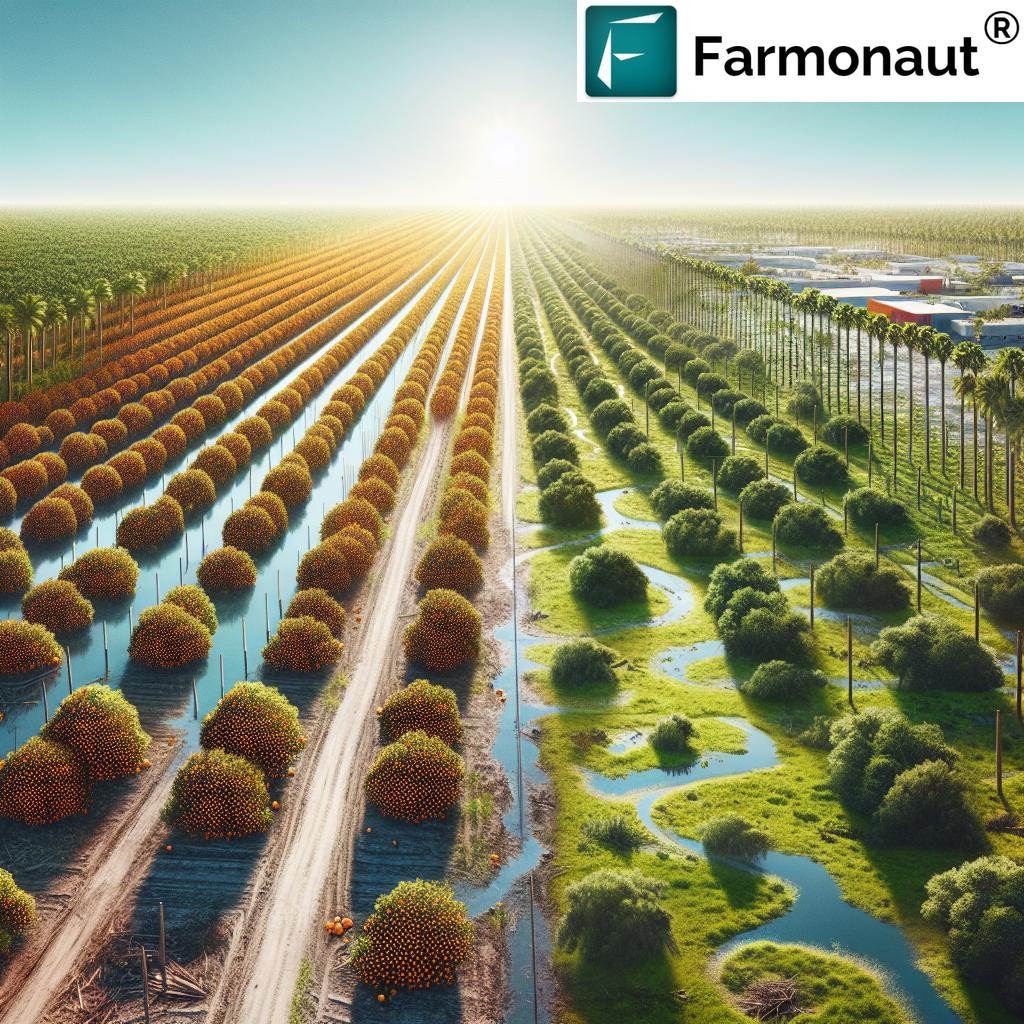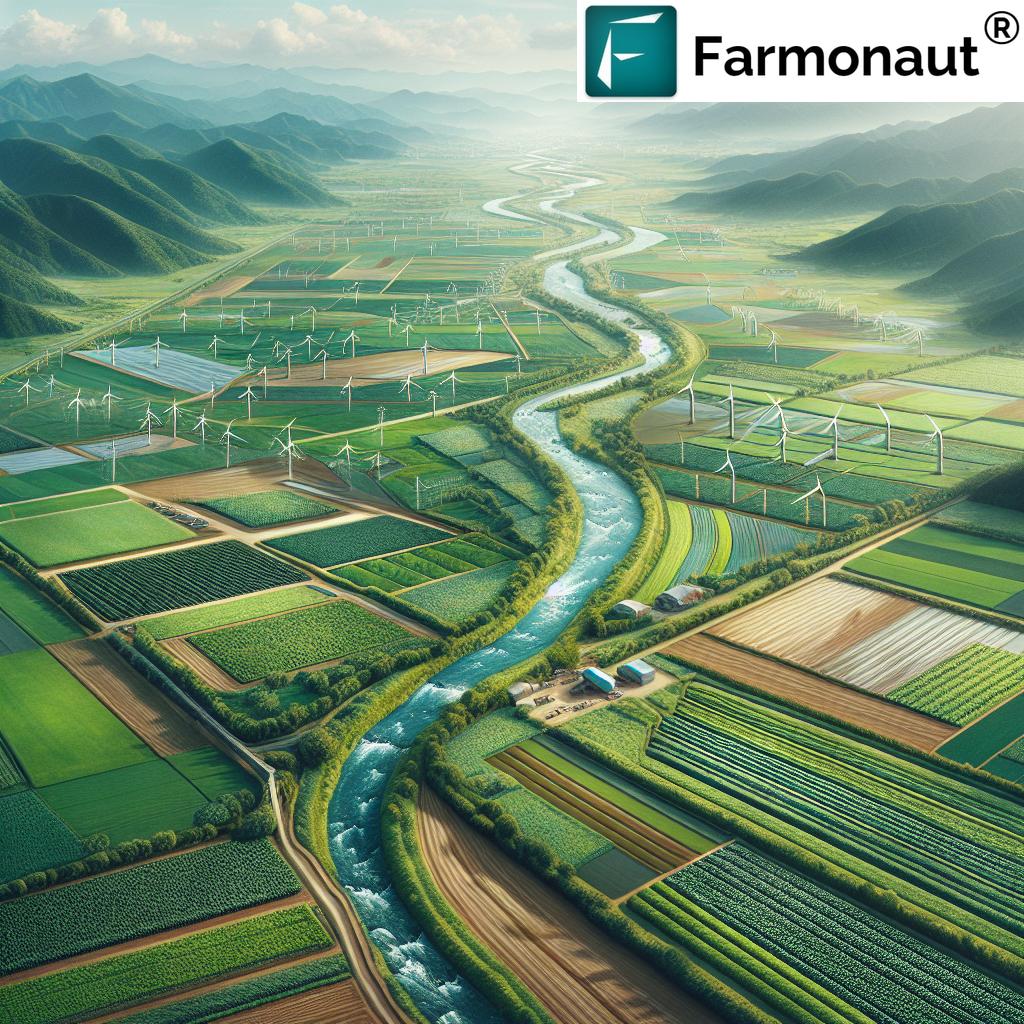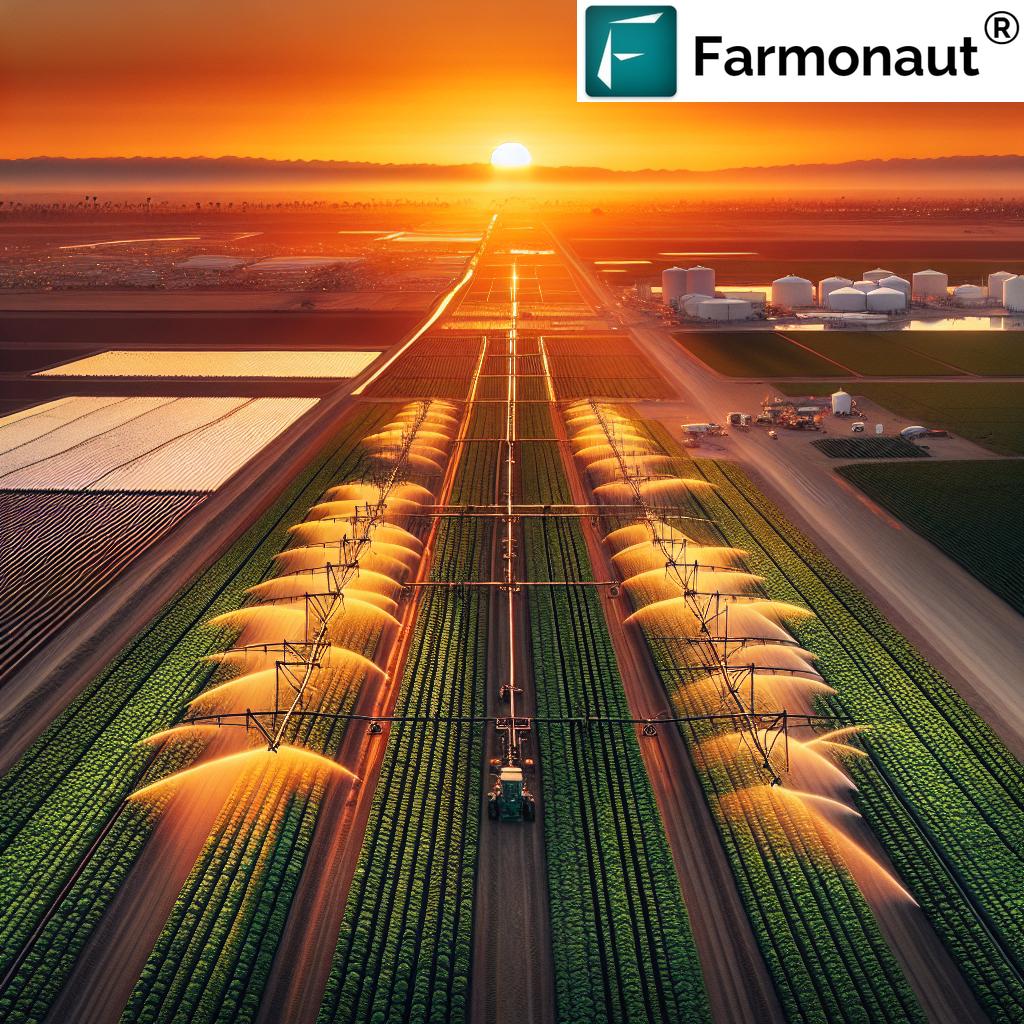Arid Regions of the World: Best Farmland in the Mid-South (2025 Insights on Sustainability, Soil, and Water Management)
Table of Contents
- Introduction: The Challenges and Opportunities of Arid Regions and the Best Farmland in the Mid-South
- Understanding Arid Regions of the World
- Agricultural Challenges in Arid Environments
- 2025 Innovations in Arid Region Agriculture
- Sustainable Water Management in Arid Landscapes
- Crop Selection and Genetic Innovations in Arid Zones
- Agroforestry and Soil Quality Innovation for Arid Regions
- The Mid-South’s Farmland Advantage (2025 and Beyond)
- Best Practices for Sustainable Agriculture in the Mid-South
- Comparative Table: Arid Regions of the World vs Best Farmland in the Mid-South Region
- Bridging the Gap: Insights for Future Agricultural Resilience
- How Farmonaut Empowers Agricultural Sustainability
- FAQ: Arid Regions, Agriculture, and the Mid-South’s Best Farmland
Introduction: The Challenges and Opportunities of Arid Regions and the Best Farmland in the Mid-South
The arid regions of the world, best farmland in the mid-south region—these two contrasting landscapes define much of our global agricultural narrative in 2025. On one side, we have vast swathes of arid land characterized by low rainfall, high temperatures, and poor soil quality, spanning significant parts of Africa, the Middle East, Central Asia, and Australia. These areas face severe agricultural, environmental, and management challenges, yet also foster unique opportunities for innovation.
Contrastingly, the mid-south region of the United States—including states like Arkansas, Missouri, Tennessee, and Mississippi—is renowned for its best farmland. These fertile grounds support diverse, high-yield crop production with advanced infrastructure and sustainable practices. In 2025, understanding both landscapes reveals crucial insights about resilience, the role of technology in farming, and the need to optimize land use for food security and future sustainability.
Understanding Arid Regions of the World
Arid regions cover substantial parts of the globe. These areas, including the Sahara in Africa, the Middle East deserts, Australia’s Outback, and much of Central Asia, are characterized by:
- Low rainfall—often less than 250mm (10 inches) annually
- High temperatures, causing rapid water loss
- Poor soil quality—sand or salty soils with low fertility
- Frequent drought events and unpredictable rainfall
- Vulnerability to soil degradation, erosion, and desertification
Globally, arid zones present unique farming challenges and opportunities. These environments demand innovative strategies for maximizing yields while safeguarding resources, soil, and food security.
Key Locations: Arid Regions of the World
- Sahara Desert (Africa) – The world’s largest hot desert
- Arabian Peninsula (Middle East) – Home to the Rub’ al Khali (“Empty Quarter”)
- Central Asia – Including Kazakhstan’s arid plains and the Kyzylkum, Karakum deserts
- Southwest United States – Arizona, Nevada, and New Mexico; often dry, with unique flora
- Australian Outback – Massive stretches of sparsely populated red sands
Agricultural Challenges in Arid Environments
Arid regions of the world often make traditional agriculture challenging due to several intrinsic factors:
- Limited Water Availability: Low rainfall and high evaporation rates restrict natural and artificial irrigation options.
- Poor Soil Fertility: Sandy or saline soils lack essential nutrients, reducing crop yields.
- Soil Degradation and Desertification: Overuse, wind erosion, and unsustainable use quickly degrade soils, leading to loss of arable land.
- Extreme Temperatures: Heat stress reduces plant productivity and increases irrigation demands.
- Food Insecurity: With limited yields and unstable climate conditions, communities face higher risks of food insecurity.
Nonetheless, these harsh environments demand innovative approaches and solutions to optimize land use, ensure food security, and support growing populations in 2025 and beyond.
Trivia Break!
“Efficient water management in arid Mid-South farms reduces water use by 30% while maintaining high soil fertility levels.”
2025 Innovations in Arid Region Agriculture
As we progress into 2025, technological innovations are reshaping agriculture in arid regions around the world. The focus remains on sustainable farming practices, precision techniques, and science-driven solutions to maximize productivity and efficiency under resource constraints.
- Precision Agriculture: Satellite imagery, APIs, and advanced sensors allow for tailored water and nutrient application, minimizing waste and enhancing crop yields.
- Drip Irrigation Systems: Targeted water delivery reduces evaporation and ensures moisture reaches plant roots directly.
- Drought-resistant Varieties: Advanced breeding techniques and genetics create new crop types (such as hardy sorghum, millet, and certain legumes) adapted for arid environments.
- Soil Conservation Methods: Cover cropping, mulching, and improved plowing reduce soil degradation and promote fertility.
- Agroforestry: Integrating crops with specific trees that support microclimates, reduce wind erosion, and improve soil structure.
- Data-driven Advisory Systems: Utilizing platforms, such as Farmonaut, which rely on real-time monitoring and AI advisory to guide sustainable practices and maximize productivity even under severe water constraints.
For instance, our JEEVN AI system leverages satellite data and artificial intelligence to deliver crop-specific insights, from weather forecasts to irrigation planning—helping arid-zone farmers adapt to shifting environmental conditions and maintain yields efficiently.
Explore the large scale farm management system for remote crop monitoring, yield prediction, and soil analysis powered by satellite and AI, ideal for managing extensively arid agricultural lands.
Sustainable Water Management in Arid Landscapes
Water is the most crucial resource in arid regions—making water-saving technologies and sustainable irrigation practices essential for future food security.
Key Water Management Practices in 2025
- Drip Irrigation: Carefully delivers water directly to root zones of plants, significantly reducing losses due to evaporation and wind.
- Soil Moisture Sensing: Satellite-enabled sensors provide real-time insights, helping to optimize irrigation scheduling and minimize waste.
- Rainwater Harvesting: Innovative rainwater collection systems store infrequent, but intense, rainfall for later use in irrigation.
- Reuse and Recycling: Reusing greywater, filtering runoff, and recycling agricultural water reduce demand on fresh water sources.
- Mulching: Mulch cover helps maintain soil moisture, even under arid heat.
These systems and practices work in tandem with precision agriculture platforms like those available with Farmonaut’s monitoring solutions, giving farmers actionable data on soil moisture, irrigation effectiveness, and crop health.
Integrate satellite-based crop loan and insurance verification to support arid region farmers financially while ensuring traceability and transparency using Farmonaut’s real-time monitoring.
Crop Selection and Genetic Innovations in Arid Zones
Intensive crop research and genetic advancements are pivotal for maintaining productivity in arid zones. In 2025, significant progress has been made in identifying, breeding, and genetically enhancing crops suited to low-rainfall, high-temperature environments.
- Sorghum & Millet: Naturally drought-tolerant and fast-maturing—vital in food production for arid regions.
- Legumes (like chickpeas & lentils): Requiring less water than most staple grains, while enriching soil nitrogen.
- Genetically Enhanced Cereals: Through advanced breeding and CRISPR techniques, newer crop varieties exhibit better heat, drought, and salinity resistance.
- Integrated Crop Rotations: Optimizes yields and sustains soil fertility by rotating and intercropping drought-adapted species.
Access our traceability solutions to improve supply chain transparency—essential for monitoring the flow and provenance of arid-zone crops, increasing consumer and investor confidence.
Agroforestry and Soil Quality Innovation for Arid Regions
Agroforestry has become a cornerstone for sustainable soil management and climate-smart agriculture in arid zones worldwide. Integrating trees with crops delivers multiple ecosystem services:
- Improved Soil Structure: Deep-rooted trees break up compacted layers and bring nutrients to the surface.
- Reduced Erosion: Trees and perennial plants stabilize soils and prevent wind and water erosion.
- Enhanced Biodiversity: Multilayered planting nurtures beneficial insects, birds, and microbes.
- Microclimate Creation: Trees shade crops and reduce ground-level evaporation, supporting higher yields.
Soil conservation techniques—cover cropping, organic amendments, and efficient residue management—are increasingly coupled with satellite-based soil monitoring to assess degradation, fertility, and long-term productivity.
Interested in tracking soil carbon for sustainability and climate impact? Utilize our carbon footprinting service—empowering you to monitor, reduce, and report on carbon emissions from arid and fertile farmlands alike.
The Mid-South’s Farmland Advantage (2025 and Beyond)
While arid zones fight for every drop of water and scrap of fertility, the best farmland in the mid-south region of the United States boasts exceptionally favorable conditions for agriculture. These states—including Arkansas, Missouri, Tennessee, and Mississippi—are recognized for:
- Rich Alluvial Soils: Deposited by rivers over centuries; highly fertile and deep.
- Consistent Rainfall: Averaging 1,100–1,300mm annually—ideal for a range of crops.
- Longer Growing Seasons: Warm temperatures allow more harvesting cycles and crop diversity.
- Well-developed Infrastructure: Modern irrigation, transportation, and research networks support high-yield food production.
By 2025, these landscapes remain at the forefront of agricultural production—delivering stable, abundant harvests and contributing significantly to global food security.
Monitor and maximize yield from the best farmland in the mid-south region with our fleet management solutions—optimizing operational efficiency for every acre.
Key Crops and Yields in the Mid-South
- Soybeans—High-value, rotation-friendly, and supported by robust export markets
- Corn—Principal source for food, feed, and ethanol, thriving in fertile soils
- Cotton, Rice, Wheat—Enjoying consistent, profitable yields from river valleys and irrigated plains
These, combined with advanced crop rotation and soil management, result in the region often outyielding global averages by 50-150%.
Best Practices for Sustainable Agriculture in the Mid-South
Sustainability in the mid-south isn’t accidental; it’s built on generations of evolving, data-backed management practices. In 2025, these include:
- No-till Farming: Reduces soil erosion, conserves water, and improves organic matter retention.
- Cover Cropping: Grows selected plants between main crops to keep soils covered, fix nitrogen, and prevent weed growth.
- Integrated Pest Management (IPM): Combines biological, physical, and minimal chemical approaches for pest control.
- Precision Resource Management utilizing AI-driven tools and satellite APIs to enhance efficiency while reducing environmental impact.
- Advanced Machinery: Autonomous tractors and data-driven monitoring systems, increasing efficiency and reducing labor demand.
The result? Sustained high yields and soil health, with reduced water and input use—positioning the region as a global model for efficient, resilient food production.
Comparative Table: Arid Regions of the World vs Best Farmland in the Mid-South Region
To deepen your understanding of arid regions of the world, best farmland in the mid-south region, examine the following table, which summarizes key climate, crop, and sustainability differences between exemplary arid zones and top mid-south farmland locales.
| Region Name | Climate Type (Annual Rainfall) | Major Crops Grown | Soil Quality | Water Management Practices | Sustainable Farming Innovation | Estimated Crop Yield (tons/ha) |
|---|---|---|---|---|---|---|
| Sahara (Africa) | Arid (50–150mm) | Millet, Sorghum, Dates | Very Poor (High Salinity) | Drip, Rainwater Harvesting | Drought-resistant Varieties, Mulching | 0.3–1.2 |
| Arabian Peninsula (Middle East) | Hyper-Arid (30–100mm) | Dates, Barley, Wheat | Low (Saline, Sandy) | Desalination, Drip, Center Pivot | Soil Amendments, Water Recycling | 0.5–1.8 |
| Australian Outback | Arid/Semi-arid (200–400mm) | Wheat, Chickpea, Barley | Low-moderate (Variable) | Capillary Wick, Drip, Rain-fed | Precision Farming, Rotational Grazing | 0.7–2.1 |
| Southwest US (Arizona, New Mexico) | Arid (150–350mm) | Alfalfa, Cotton, Sorghum | Moderate (Alluvial Pockets) | Irrigation Canals, Drip, Mulching | Mulch, Water Reuse, AI Scheduling | 1.5–4 |
| Mississippi Delta (Mid-South US) | Humid Subtropical (1200–1350mm) | Soybean, Rice, Corn, Cotton | Very High—Deep, Fertile Alluvial | Surface, Drip, Flood, Precision | No-till, Cover Crops, AI Resource Management | 4–7 |
| Arkansas Valley (Mid-South US) | Humid (1100–1300mm) | Rice, Soybean, Corn | High (Rich Alluvial) | Flood, Drip, Subsurface | Cover Cropping, Water-saving Tech | 4.5–8 |
Bridging the Gap: Insights for Future Agricultural Resilience
The contrast between arid regions of the world and the best farmland in the mid-south region underscores the diversity of challenges and the vibrant landscape of agricultural opportunities. As climate shifts and population rises, two key strategies gain prominence:
- Knowledge Transfer & Collaboration: Arid regions’ water-saving innovations inspire global change, while the mid-south’s soil conservation and yield-maximizing protocols offer a blueprint for fragile landscapes.
- Flexibility & Tailoring: Each region requires context-specific solutions—integrating local resources, adapted crop varieties, and sustainable technology.
- Innovation Adoption: Adopting precision agriculture, real-time satellite monitoring, and blockchain traceability accelerates resilience against degradation, desertification, and climate risks.
Future security in agriculture hinges on embracing sustainable practices, fostering innovation, and bridging knowledge from technologically-adaptive arid zones to the fertile, resource-rich landscapes of the mid-south.
How Farmonaut Empowers Agricultural Sustainability
At Farmonaut, we believe that sustainable agriculture is built on practical, data-driven insights accessible to every farm—whether in the world’s harshest arid zones or the United States’ best mid-south farmland. Here’s how we help users optimize land use, conserve resources, and foster innovation:
- Real-time Satellite Monitoring: Our multispectral satellite images provide up-to-date data on crop health, soil conditions, and water stress—enabling targeted interventions.
- AI-based Advisory: Through Jeevn AI, we deliver weather forecasts, irrigation advice, and disease risk prediction tailored to each farm’s needs.
- Blockchain Traceability: With secure, blockchain-based record-keeping, we ensure that supply chains remain transparent and authentic—key for global market access from both arid and fertile regions.
- Resource & Fleet Management: Our solutions help optimize equipment use, reduce operational costs, and streamline logistics—enhancing productivity and sustainability.
- Environmental Impact Tracking: From carbon footprint metrics to compliance monitoring, we empower farms to document and reduce their environmental impact.
- API & App Integration: Our platform meets farmers, researchers, and agribusinesses where they are—on the web, Android, or iOS—making insights fully accessible and actionable.
For those monitoring large-scale farms, developing climate-smart rotations, or maximizing arid zone productivity, our solutions are designed to scale and adapt as operations grow.
Learn more by exploring our API developer documentation for custom integration in technological agricultural environments.
FAQ: Arid Regions, Agriculture, and the Mid-South’s Best Farmland
What defines the “arid regions of the world” in agriculture?
Arid regions are geographical areas characterized by very low rainfall (less than 250mm annually), high temperatures, and poor soil fertility. These environmental conditions demand specialized management, crop selection, and innovative resource use for successful agriculture.
Why is the mid-south region considered the best farmland in the United States?
The mid-south region—including Arkansas, Missouri, Tennessee, and Mississippi—features deep, fertile alluvial soils, abundant rainfall, and developed infrastructure. This environment supports diverse, high-yield crops and enables sustainable production practices.
What are the biggest agricultural challenges facing arid regions in 2025?
The main challenges include water scarcity, poor soil fertility, high risk of degradation and desertification, extreme temperature stress, and food insecurity. These require ongoing technological innovation and resilient farming strategies.
How do advancements in technology help arid region farming?
Satellite monitoring, AI advisory systems, blockchain-based traceability, and water-efficient irrigation enable precise resource management, early risk prediction, and supply chain transparency—key ingredients for sustainable arid region agriculture in 2025 and beyond.
Can sustainable practices used in the mid-south be applied to arid regions?
Yes, with adaptation. Soil conservation, crop rotation, precision application of water and nutrients, and integrated pest management form the backbone of sustainable agriculture everywhere—but require tailoring to local climate, water, and soil constraints in arid environments.
How does Farmonaut help optimize both arid and fertile farm landscapes?
We offer real-time monitoring of crop health, soil quality, and water use; deliver AI-driven advisories for irrigation and disease risks; and provide blockchain-enabled traceability, fleet/resource management, and carbon tracking services—all accessible via web or mobile. Our tools empower users to enhance yields, efficiency, and sustainability—regardless of their location.
Where can I access Farmonaut’s satellite weather API and app?
Visit our satellite weather API and web/mobile app platform.
Conclusion: Resilience, Sustainability, and Innovation Define The Agricultural Future
The journey from the arid regions of the world to the best farmland in the mid-south region is one of persistence, ingenuity, and technological leapfrogging. In 2025 and beyond, agricultural success relies on integrating precision technologies, adaptive crop genetics, and sustainable practices—whether tending sun-baked soils of the Sahara or managing fertile cornfields of the Mississippi Delta.
The landscape of global food production is dynamically evolving—with arid zones innovating out of necessity, and the mid-south refining best-in-class resource management and sustainable farming. By bridging gaps through knowledge sharing, technology adoption, and tailored regional approaches, we empower a resilient, productive, and sustainable agricultural future for all.
Ready to transform your approach to farming, soil management, or crop production? Get started with Farmonaut’s platform for affordable, actionable satellite insights—no matter your landscape.












